Siem Reap is the gateway to the ancient wonders of Angkor, a UNESCO World Heritage site that attracts travelers from around the world. With dozens of temples to explore, it can be overwhelming to decide where to go first. Here’s a guide to some of the main temples you must see, the best times to visit them, and a touch of history behind these awe-inspiring sites.
Siem Reap, the gateway to Cambodia’s Angkor Archaeological Park, is a treasure trove of history and culture. Visit iconic temples like Angkor Wat, Bayon, Ta Prohm, and Neak Pean, each offering unique beauty and stories. For sunset lovers, head to Phnom Bakeng or Phnom Krom for spectacular views. Beyond temples, enjoy vibrant night markets, Apsara dance shows, and local cuisine, making Siem Reap unforgettable for every traveler.
Angkor Wat – The Crown Jewel of Cambodia
- Built: Early 12th century (c. 1113–1150 AD)
- Commissioned by: King Suryavarman II
- Dedicated to The Hindu god Vishnu
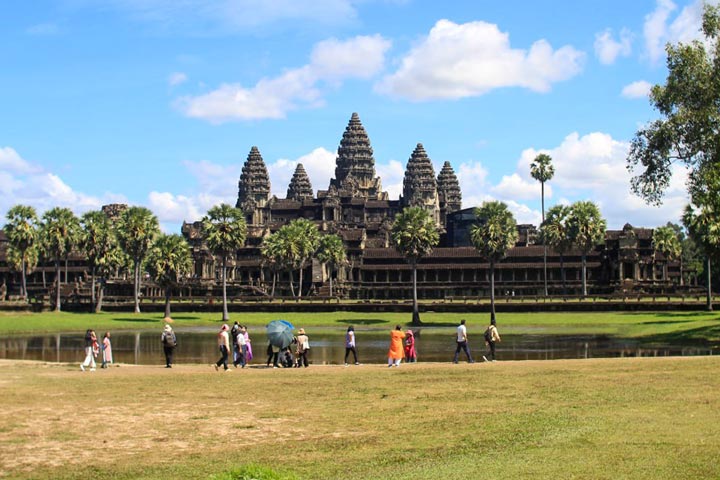
Angkor Wat is not only the largest religious monument in the world—it’s also Cambodia’s national pride, appearing on the country’s flag. Originally constructed as a Hindu temple dedicated to Vishnu, it later transformed into a Buddhist temple, which it remains today.
Best Times to Visit:
Sunrise: Arrive by 5:00 AM for a breathtaking view of the sun rising behind the temple towers
Afternoon: For clear blue skies and vibrant photos.
Sunset: The temple itself doesn’t face west, but the soft golden light still adds a magical touch.
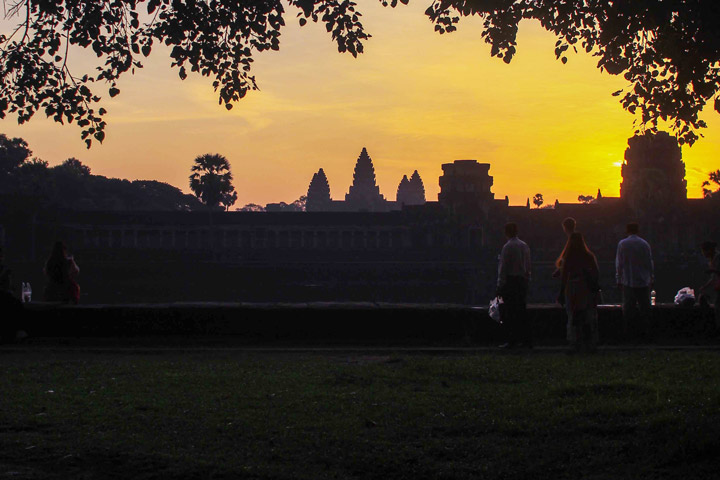
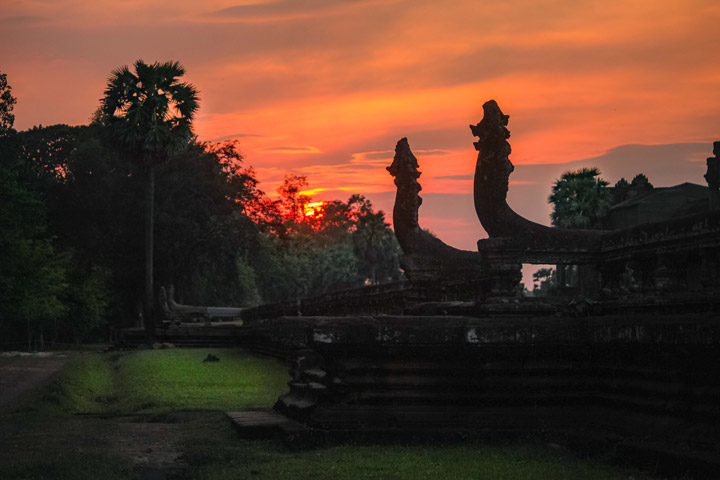
Angkor Wat Map
Angkor Thom & Bayon – The Smiling Faces of the Khmer Empire
- Built: Late 12th century
- Commissioned by: King Jayavarman VII
- Dedicated to Avalokiteshvara (a bodhisattva of compassion)
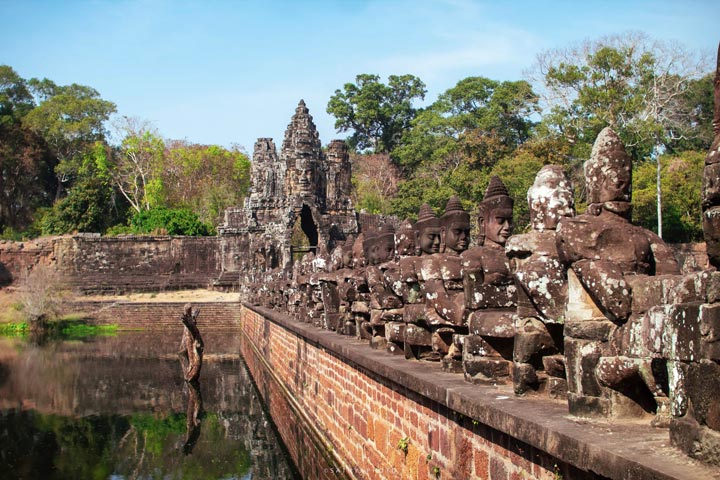
Angkor Thom, meaning “Great City,” was the last capital of the Khmer Empire. It’s a massive walled city with gates guarded by stone gods and demons. At its center is the iconic Bayon Temple, known for its 216 serene and mysterious stone faces.
Best Times to Visit Bayon:
Morning (7:00 AM – 11:00 AM): Cooler temperatures and fewer tourists.
Gate of the Dead East Gate is Ideal for adventurers looking for quiet and a touch of mystery. The gate is rarely visited and perfect in the rainy season when everything turns lush and green.
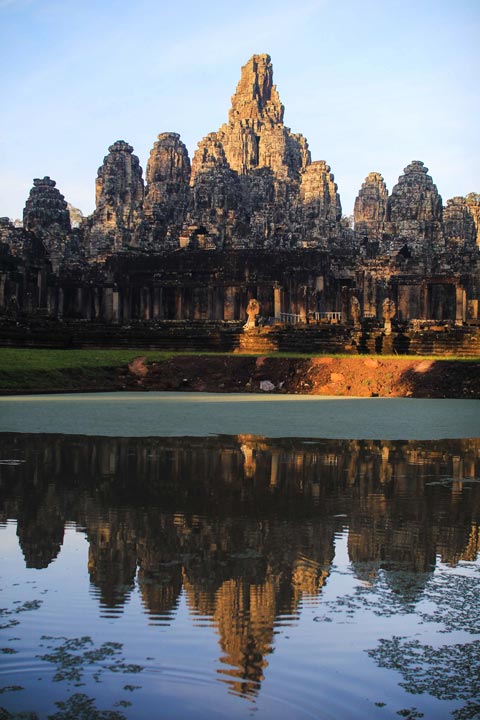
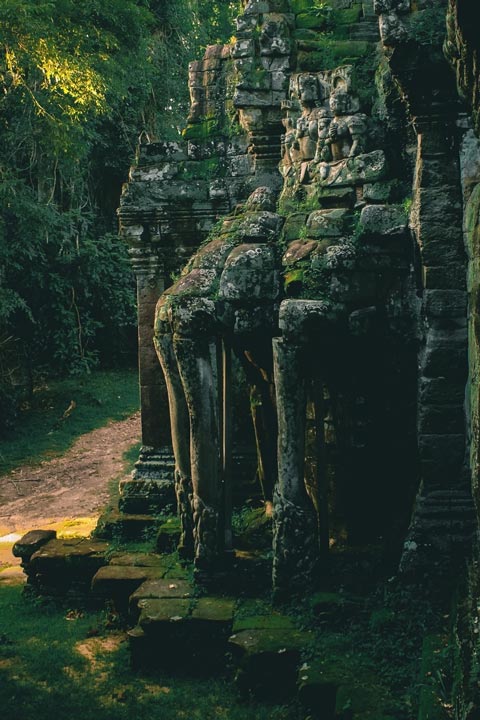
Bayon Temple Map
Ta Prohm – Where Nature Takes Over
- Built: Late 12th to early 13th century
- Commissioned by: King Jayavarman VII
- Dedicated to: The king’s mother, as a Buddhist monastery and university
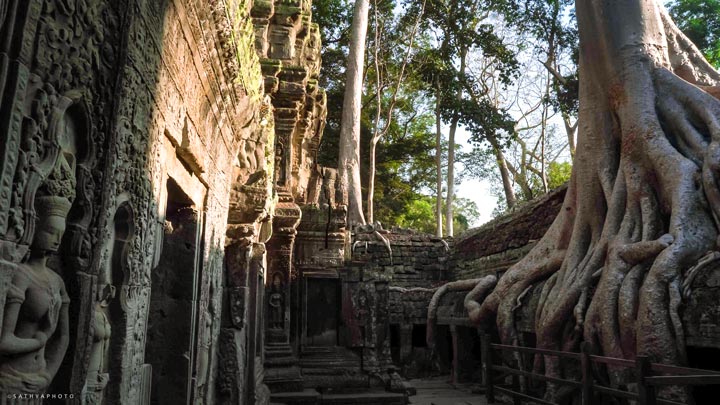
Made iconic by the movie Tomb Raider, Ta Prohm stands as one of the most atmospheric and mysterious temples within the Angkor complex. Unlike other restored temples, Ta Prohm has been left largely in its natural state, where giant roots of silk-cotton and strangler fig trees dramatically entwine the crumbling stone structures. This hauntingly beautiful blend of nature and ancient architecture makes it a must-visit for photographers, explorers, and history lovers alike.
Best Time to Visit: Early morning or late afternoon for soft, dramatic lighting and fewer crowds, perfect for immersive exploration and photography.
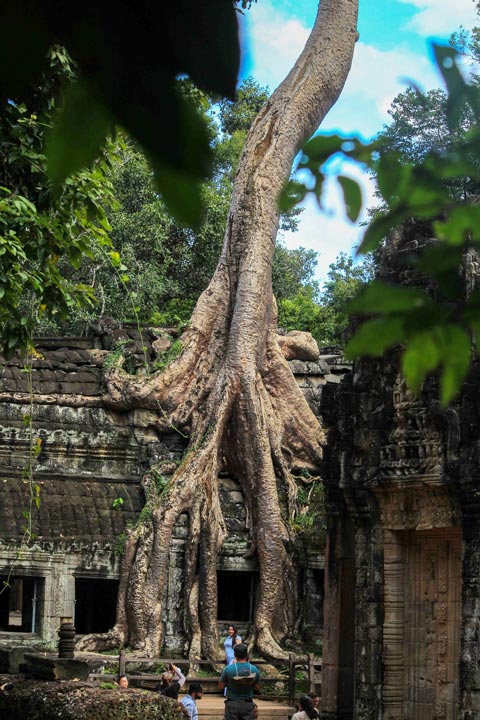
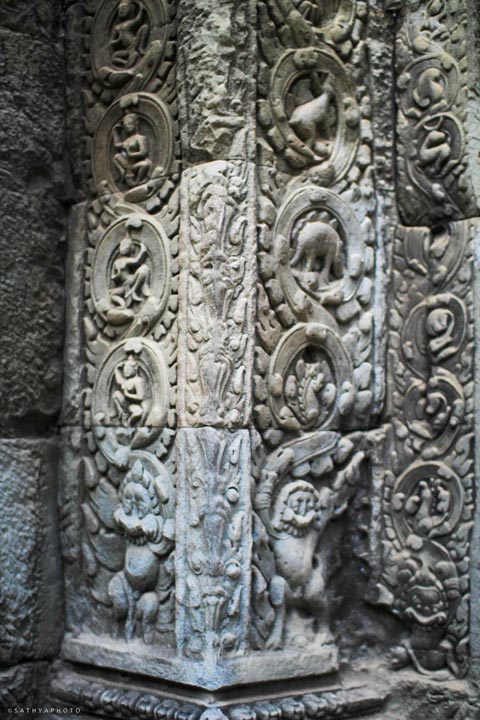
Ta Prohm Map
Neak Pean – The Healing Island Temple
- Built: Late 12th century
- Commissioned by: King Jayavarman VII
- Dedicated to: Buddhist healing and the balance of the elements
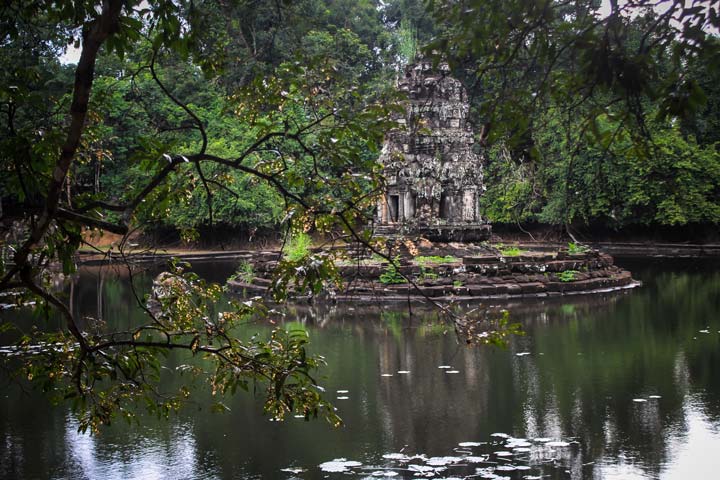
Nestled on a tranquil artificial island in the center of a vast square pool, Neak Pean is a small yet graceful temple that offers a serene and symbolic experience. Built in the 12th century, it was designed as a place of spiritual healing, inspired by ancient beliefs that bathing in sacred waters could restore health and balance to the body and soul. Surrounded by peaceful reflections and water channels leading to four connected pools, Neak Pean is a quiet reminder of the Khmer Empire’s deep connection to nature, medicine, and mythology.

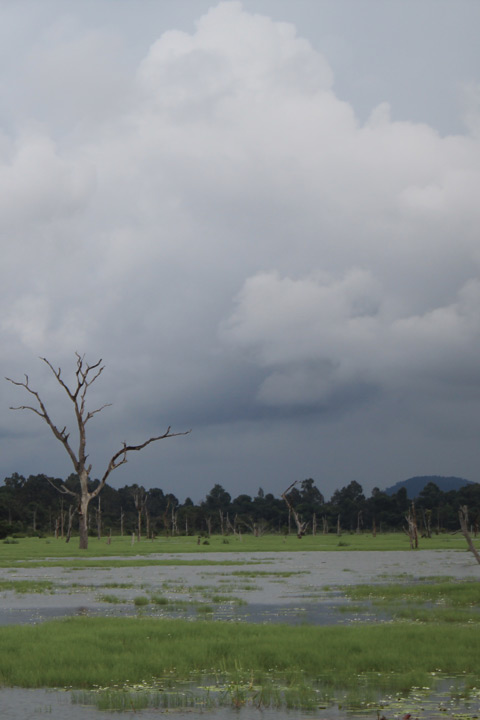
Neak Pean Map
Sunset Spots Around Angkor
End your temple day with a beautiful Cambodian sunset. Here are some of the best places to catch those golden rays:
Phnom Bakheng
Built: Late 9th to early 10th century
Commissioned by: King Yasovarman I
Dedicated to: Shiva
This hilltop temple was the state temple before Angkor Wat. A short hike gets you to panoramic views of the surrounding jungle and Angkor Wat in the distance.
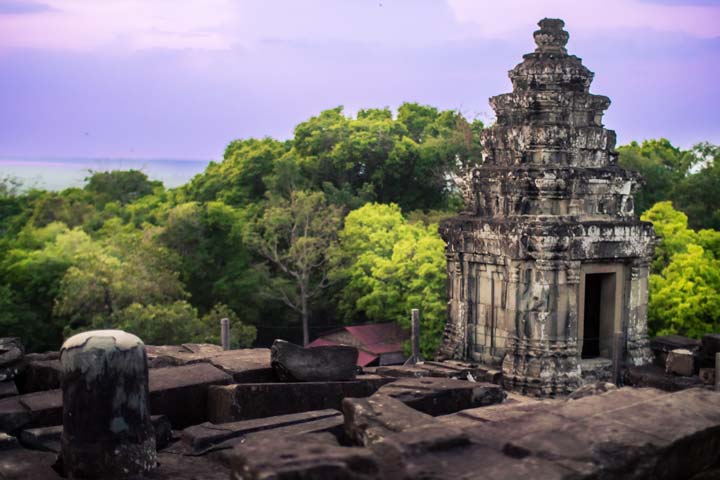
Phnom Krom
Built: Late 9th century
Commissioned by: King Yasovarman I
Dedicated to: Hindu trinity (Shiva, Vishnu, Brahma)
Another hilltop gem overlooking Tonle Sap Lake—less visited and perfect for peaceful sunsets.
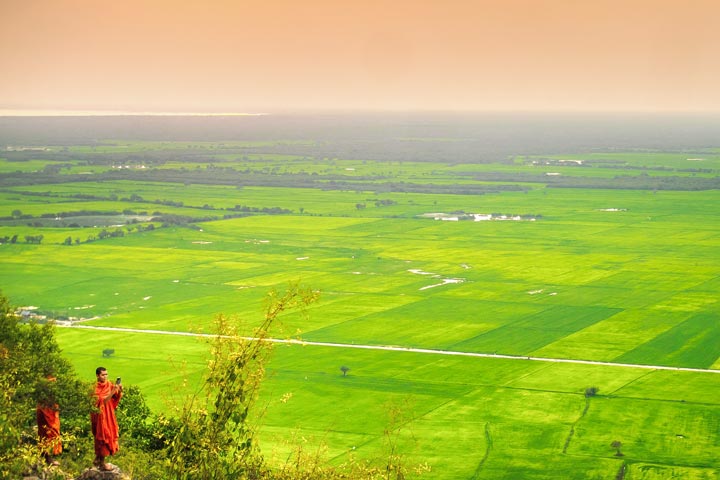
Srah Srang Sunrise and Sunset
Built: Mid-10th century (with later modifications)
Commissioned by: Originally by Rajendravarman, renovated by Jayavarman VII
Dedicated to: Public bathing and relaxation
Known as the “Royal Bath,” it offers tranquil water reflections and a peaceful place to relax, mostly for Sunrise and Sunset.
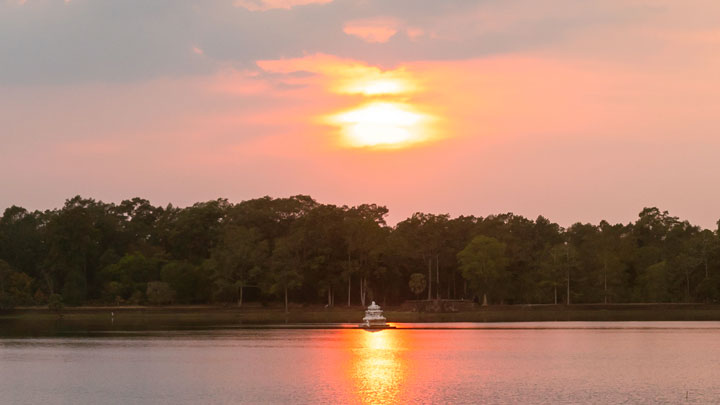
Pre Rup Sunset
Built: Mid-10th century (c. 961 AD)
Commissioned by: King Rajendravarman
Dedicated to: Shiva
This reddish sandstone temple glows beautifully under the setting sun, giving a warm and fiery appearance.
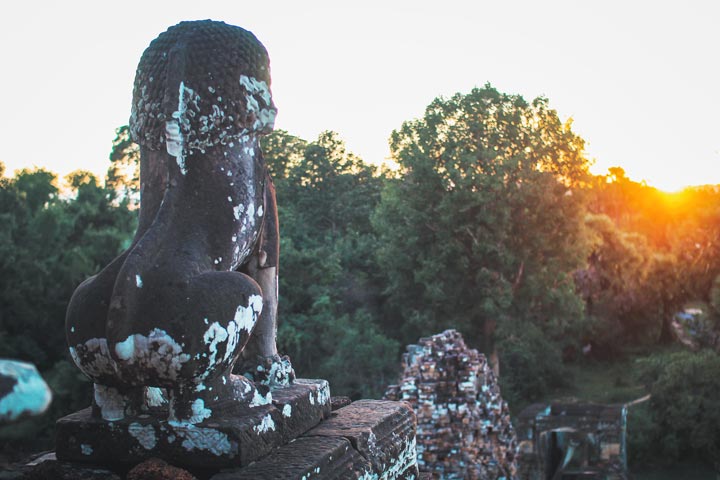
Gallery




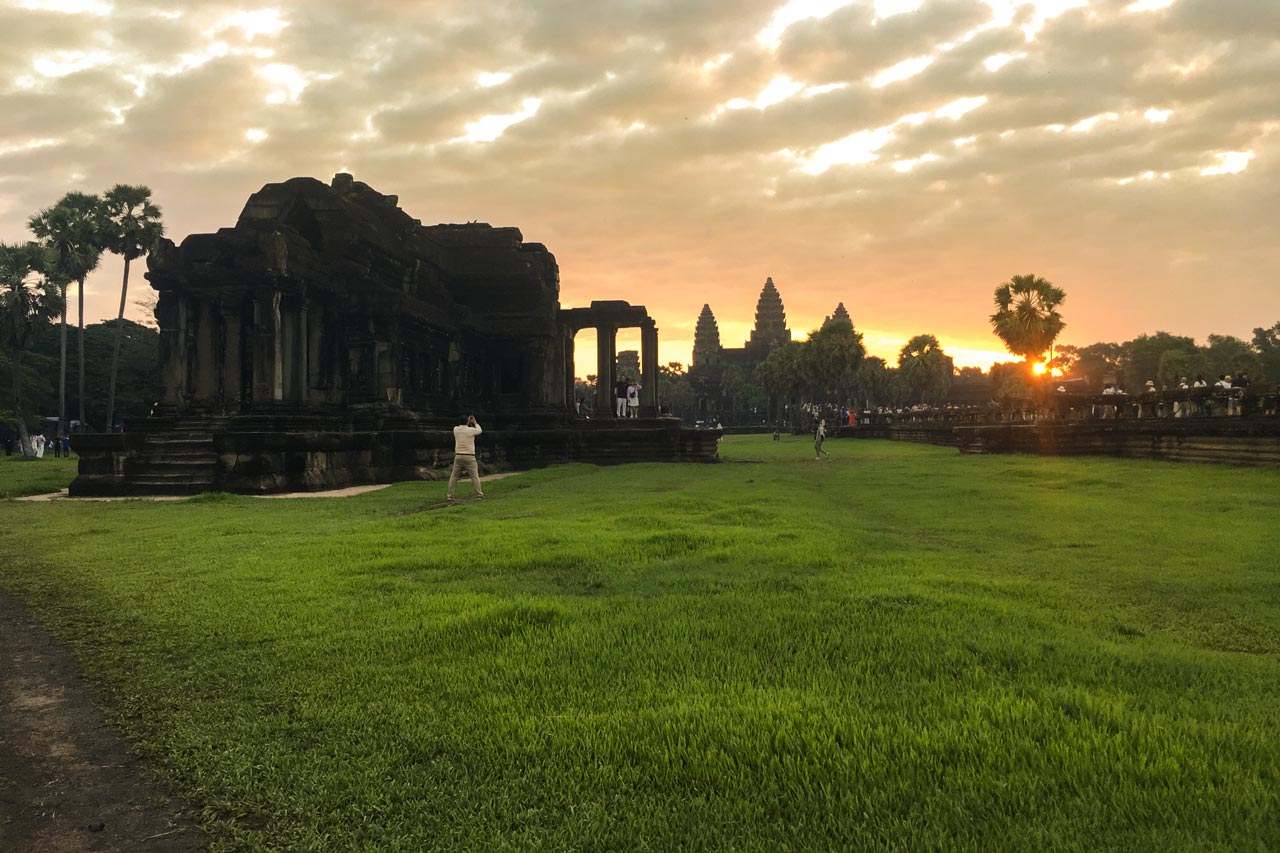











Photo by Sathya Moth


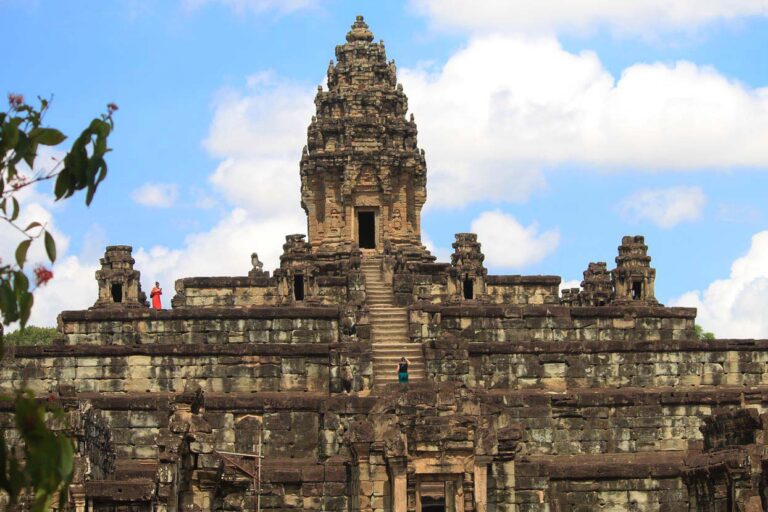
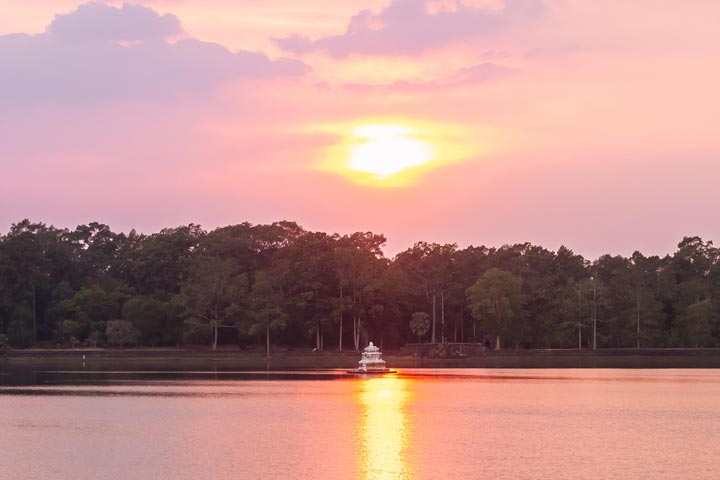
Leave a Reply